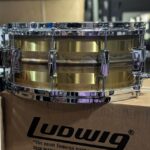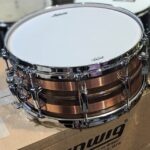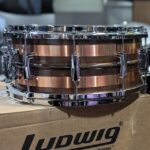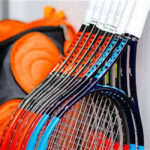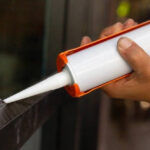As John Bonham’s thunderous opening to “When the Levee Breaks” crashes over speakers, you’re not only hearing drums—you’re hearing the unmistakable voice of Ludwig. Since 1909, these drums have been more than just part of music history; they’ve contributed to its sound.
The signature “crack” of Ringo’s Ludwig Super Classic on “She Loves You,” the low-end growl of Mitch Mitchell’s kit behind Hendrix, or the precision attack of Neil Peart’s massive Ludwig setup—these are not just good examples of drumming; they’re declarations of how Ludwig’s tonal personality has shaped music.
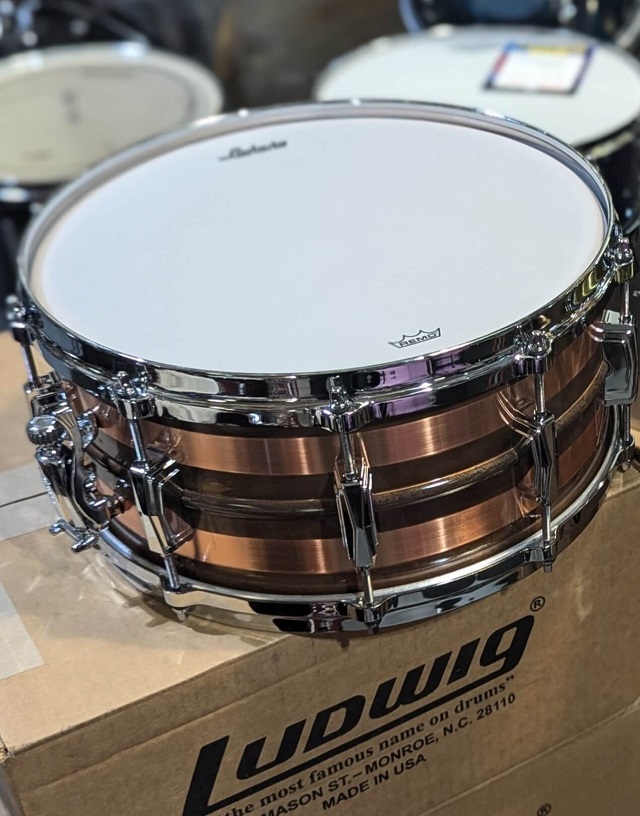
The Technical Edge: What Players Hear and Feel
Drummers recognise Ludwig drums by specific tonal characteristics that set them apart. Their maple sets deliver beautiful midrange definition with tight attack and long low-end warmth—a combination that engineers appreciate for the way these drums naturally sit together in a mix without extreme EQ adjustments.
The company’s signature 45° bearing edges featured on most modern Ludwig shells offer more head-to-shell contact, producing lush overtones without sacrificing definition even at lower tunings. The brass hardware used by Ludwig adds subtle but significant coloration to the overall resonance.
Many drummers appreciate how Ludwig’s reinforcement hoops (utilised on vintage series drums) restrict overtones in a musically satisfying way that creates shorter, more punchy notes without diminishing shell character. This compromise between sustain and control makes Ludwig kits particularly sensitive to dynamic play, bringing out delicate ghost notes and articulating delicate patterns with great clarity.
Entry Level Without Entry-Level Sound
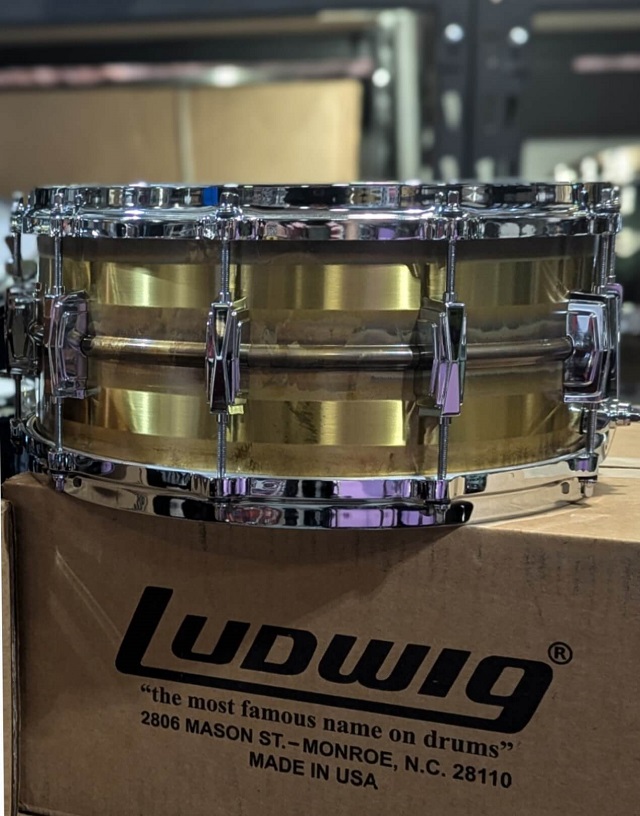
For emerging drummers looking for drums Ludwig quality kits are a great investment without the pro prices. The Questlove Breakbeats kit provides astonishing versatility. Its 16″ bass drum can seem small, but with careful tuning using minimal muffling it punches with focused clarity that records exceedingly well—engineers actually like its controlled low-end in studio applications. The 7×10″ tom and 13×13″ floor tom produce balanced projection through the entire range of tunings, giving this kit a significantly larger sound than its size suggests.
The Element Evolution series is an all-inclusive drum kit that has everything a novice drummer needs to get started. This ‘intermediate’ set features Ludwig’s “TruePitch” tension rods with finer threading that allow for fine-tuning adjustments. The not-so-obvious design modification makes these mid-grade sets much more tonally adjustable and free of unpleasant overtones. The double-braced hardware included with them can handle brutal playing, and the 900 Series bass drum pedal delivers adjustable spring tension on par with pedals costing twice as much.
Mid-Tier Marvels: Working Musician Pricing for Professional Sound
The NeuSonic line is Ludwig’s most compelling innovation for working pro drummers. These USA-made kits feature 6mm thinner shells (down from standard 7mm) with Ludwig ply-hybrid technology—maple for sound projection and cherry for warmth of tone. The 14″ depth bass drums deliver astonishing volume while taking up less space on the stage and in transport. Session drummers adore the way these kits tune up venues night after night, with extremely stable pitch even under temperature fluctuations in outdoor performances.
The Ludwig Date Club series warrants special attention from professional musicians. Their 3-ply ring-reinforced shells accurately replicate vintage 1960s-era Ludwig sets. Mahogany/poplar construction delivers breathtaking warmth in low mid-range frequencies—precisely where drums need to be nestled comfortably in crowded mixes. Engineers say these drums require significantly less EQ adjustment to sound “finished” on records.
Professional Instruments: Tools of Sonic Distinction
Ludwig’s Classic Maple series is the professional benchmark with a sonic character that shifts dramatically with shell design. The 7-ply Standard Maple provides versatile all-around sound, while the Legacy Mahogany series provides a noticeably different attack character—softer, more rounded initial strike followed by rich midrange bloom prized by jazz and studio players.
The Black Beauty snare remains Ludwig’s crown jewel. The brass shell receives a proprietary nickel-plating process that gives the shell distinct compression properties. When tensioned medium-tight, it produces the traditional “crack” sound that engineers seek in backbeats. Higher tunings deliver excellent sensitivity for complex ghost notes and dynamic brushwork. Serious professionals maintain multiple snare drums but somehow always reach for their Black Beauty for sessions demanding reliability and character.
Beginning Your Ludwig Experience: Realistic Strategies

For serious players who want to begin with drums Ludwig offers a wide range of sets. You can experiment with the “hybrid approach”—mating a top-of-the-line Ludwig snare with more affordable parts. Vintage Ludwig drums for sale from the 1970s and 1980s are remarkably affordable on the used market and will often outplay new drums at similar prices.
Look for the 3-ply shells with rings of reinforcement made during this period, as their thinner construction offers excellent resonance. The Classic series from that era includes robust chrome hardware that has already proven it can endure decades of use. When examining used Ludwig drums, pay less attention to appearance and more to roundness of the shells—even highly worn-looking drums will have a wonderful tone if the shells have retained their structural integrity.
Instruments That Inspire
The strongest argument in favour of Ludwig instruments among musicians is one beyond specs and details. These instruments are infused with a legacy of innovation that continues to drive performance. Whether it is the distinctive “Ludwig thump” or the heritage of generations of players, these drums offer something less tangible but ultimately more valuable – drums that not only produce sound but invite creativity.

